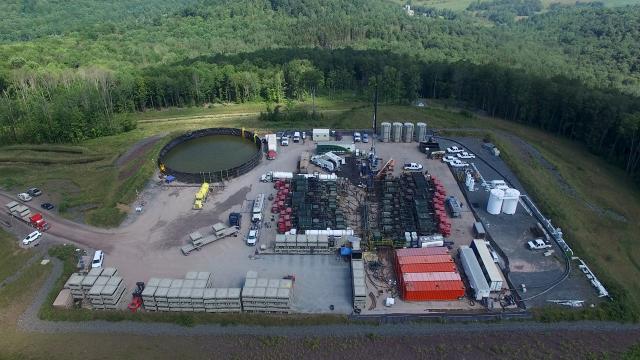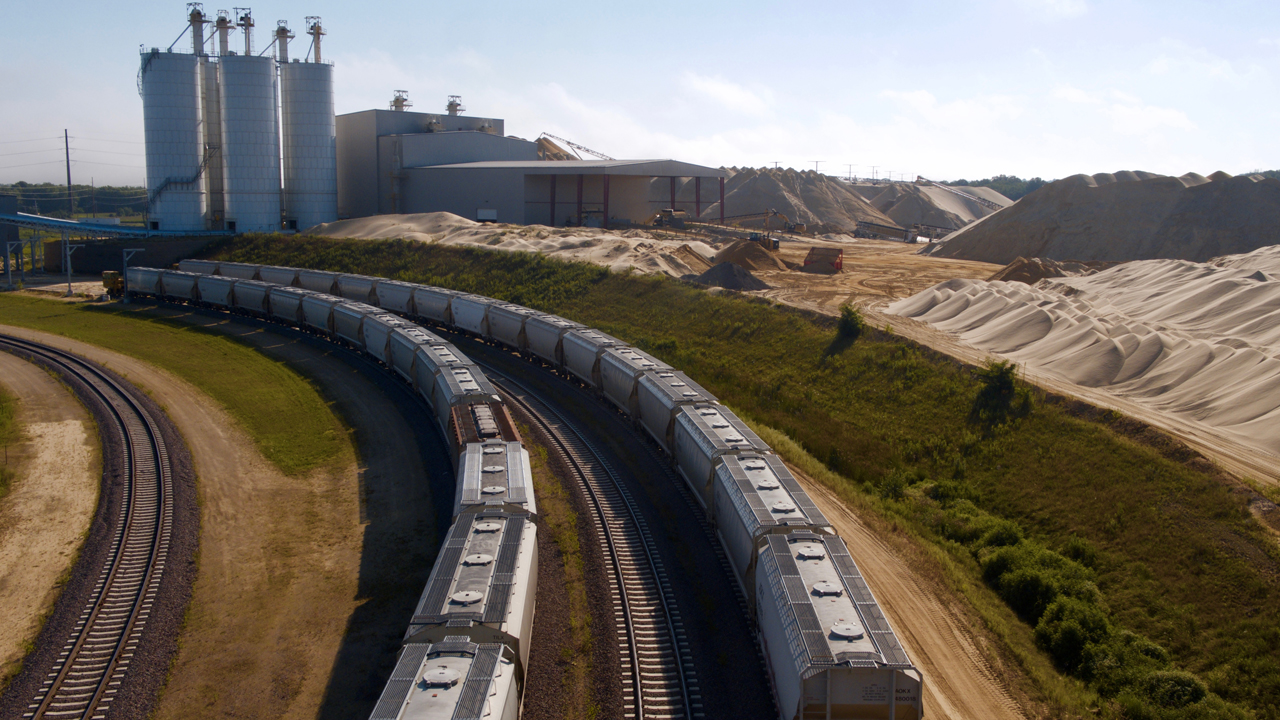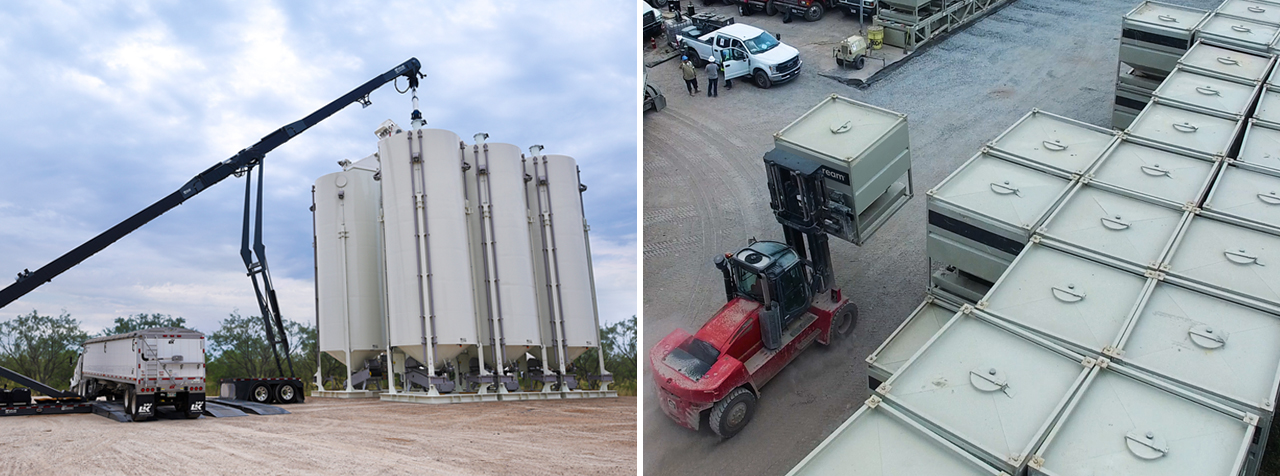
Proppant supply and logistics integration provide the tools to efficiently and effectively handle the mountains of sand used to hydraulically fracture shale wells.
A single hydraulic frac job may use 20 million pounds of sand – enough to fill hundreds of tractor-trailer trucks. Keeping up with demand for the industry’s most popular proppant has produced mile-long strings of railroad cars, and challenged last-mile delivery to the frac-spread blender with everything from road congestion, demurrage and wellsite size, to silica dust emissions.
How all that urgently needed, highly specified sand ends up at the wellsite blender is a complex logistical exercise that can make or break hydraulic fracturing economics.
At the epicenter of the shale development boom, frac treatments have grown rapidly in number and size. Managing the cost and timely supply of huge proppant volumes led to Hi-Crush’s novel integration of the entire sand supply chain, from the mine to the blender.

Joining supply and logistics management required the development of highly specialized expertise, equipment, technology and resources. Large, low-impact mines in Wisconsin and West Texas were established to assure the supply of premium sand. Purpose-built loading and transloading facilities were strategically located to efficiently move proppant by rail, or with in-basin mines, by truck directly to the field.
Last mile logistics from the mine or transload facility to the wellsite confronts a myriad of variables – including frac design and size, number of wells, road infrastructure and pad size. The solution was the creation of sophisticated software and fleets of flexible transportation, storage and delivery systems.
Web-based and mobile app software joins operators and service companies with real-time visibility that improves coordination and collects data to optimize everything from sand and equipment tracking, to order automation and payment.
Flexibility transportation to the wellsite using hopper-bottom or pneumatic trailers or specialized containers provides options to handle different frac designs, sand volumes, road conditions and wellsite footprints.

Gravity fed unloading and enclosed conveyor systems greatly reduce OSHA regulated silica dust emissions. Container systems that eliminate transfer steps can cut silica dust emissions more than 90% compared to pneumatic systems.
Containers offer delivery and onsite storage in discrete loads that are directly unloaded during the frac job. The containers enhance mobility and flexibility on single well pads, and where wellsite size and difficult roads favor a modular system.
Vertical silos provide portable storage for high-intensity treatments and where multiwell pads require extremely large volumes of sand. Safely and quickly erected by advanced trailering systems, the silos are rapidly filled using top-loading articulated, camera-guided conveyors. The system stores 150 to 280 tons per silo, and maximizes onsite storage with configurations of six or more silos.
At the end of the last mile, specialized conveyors transfer frac sand from silo or container to the frac spread blender. The conveyors reliably and safely provide sand to the ongoing frac job with precise metering and without interruption, while minimizing silica dust emissions.
Integrated proppant supply and logistics management has been central to development of these leading-edge solutions and capabilities to address the immense demands of modern hydraulic fracturing.
Get every grain of detail on the proppant supply chain. Download the free e-book: “The Fundamentals of Frac Sand Logistics.”

